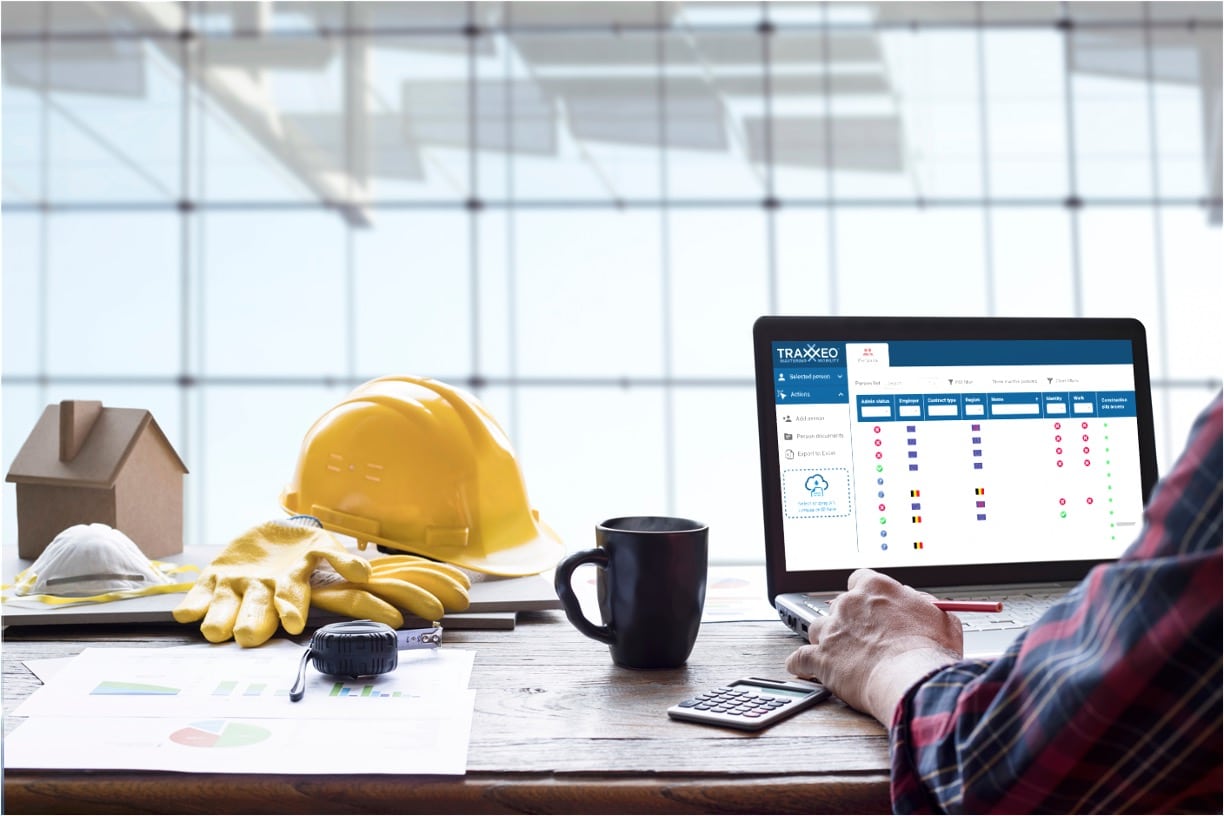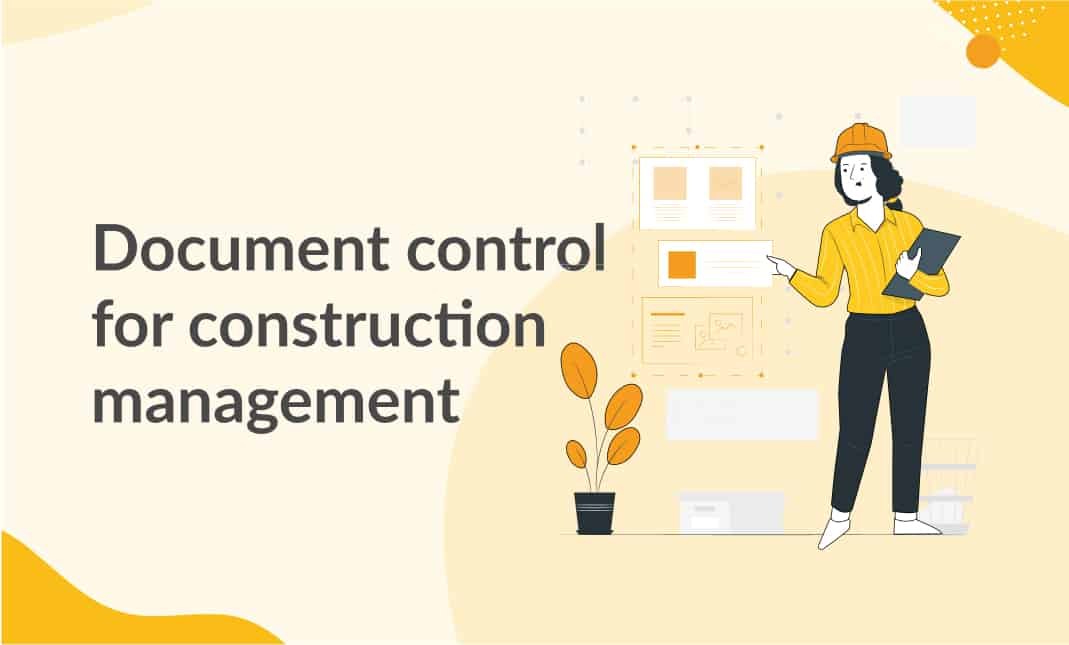Efficient Construction Document Management Solutions for Every Task
Efficient Construction Document Management Solutions for Every Task
Blog Article
Enhancing Operations Efficiency: Architect's Specialist Methods for Building Document Monitoring
In the world of building design and building and construction, the careful management of documents stands as a cornerstone for task success. Architects use various approaches to enhance operations effectiveness and streamline building and construction file monitoring procedures. From adept company techniques to the combination of joint platforms and the execution of protected information management options, engineers navigate an intricate landscape of tools and methods. Nonetheless, amidst this complexity, a pick couple of professional approaches have become essential in enhancing operations efficiency. These techniques not only make certain smooth project progression however likewise hold the key to opening improved productivity and accuracy in the complex realm of construction file management.
Trick Record Company Methods
When handling building files, one of the key methods that designers utilize is establishing a systematic and reliable organization system. This system usually includes categorizing records based upon their type, such as drawings, specifications, agreements, and permits. By creating clear and distinct classifications, architects can promptly find details info when needed, saving time and decreasing errors in the construction procedure.
Within each category, designers better organize files by creating subfolders or making use of numbering systems to signify versions or revisions (construction document management). This hierarchical framework makes certain that the most current and relevant details is easily accessible while maintaining a record of modifications made throughout the job timeline
In addition, engineers frequently utilize digital file monitoring systems that supply attributes like keyword search features, variation control, and accessibility restrictions to enhance organization and collaboration among task stakeholders. These tools streamline the document retrieval process, promote real-time updates, and facilitate seamless communication, ultimately adding to the total success of the building and construction job.
Collaborative System Assimilation
To optimize file monitoring effectiveness in building and construction jobs, designers seamlessly integrate collective platforms to improve interaction and simplify sychronisation among project stakeholders. By leveraging collective systems such as job monitoring software program, cloud-based storage systems, and interaction tools, engineers can develop a centralized hub for all project-related documents and communication networks. These systems enable employee to accessibility, evaluation, and collaborate on records in real-time, minimizing delays and the risk of errors connected with traditional record monitoring techniques.
Collective system integration likewise cultivates transparency and responsibility within the task team, as all stakeholders have exposure right into the latest task updates and revisions. By centralizing communication and record sharing, architects can guarantee that all staff member are working from the most updated details, minimizing the possibilities of misunderstandings or conflicts arising due to out-of-date papers.
Furthermore, collaborative platforms allow smooth cooperation between designers, service providers, customers, and various other project stakeholders, promoting a more cohesive and efficient job process. By breaking down interaction barriers and helping with information exchange, architects can drive efficiency and development in building jobs, eventually resulting in successful job results.
Variation Control Ideal Practices
Applying reliable variation control techniques is critical for keeping paper precision and uniformity in building jobs. By developing a clear system for handling modifications, project groups can make certain that everybody is working from the most current paperwork, decreasing the risk of mistakes and disparities during the construction stage.
One of the key ideal methods for version control is to appoint one-of-a-kind identifiers to every file variation. This can be attained by utilizing a numbering system or date stamp that clearly shows the order of revisions. By clearly labeling each model, employee can conveniently track the progression of the record and determine the most current variation.

Automation Devices for Performance

Record control software, like Procore or PlanGrid, streamlines job paperwork, making it conveniently obtainable to all stakeholders. These systems permit for real-time collaboration, version control, and automated backups, protecting against data loss. Additionally, Building Information Modeling (BIM) software automates the generation of construction drawings and makes certain that adjustments are integrated throughout all associated papers.
Incorporating automation tools with cloud storage services even more improves availability and safety. By automating the file administration process, project teams can concentrate their time and initiative on value-adding tasks, eventually enhancing productivity and project end results.
Secure Information Administration Solutions
Efficiently safeguarding and managing project information is extremely important in the building market to guarantee confidentiality and honesty throughout the task lifecycle. Protected data management remedies play an essential role in protecting delicate info from unauthorized accessibility or violations. Architectural firms can make use of encrypted cloud storage solutions to safely keep and share task files with authorized personnel. Carrying out access controls, such as customer authentication and permission setups, makes sure that only licensed individuals can check out or modify click for info delicate data.
In addition, utilizing digital civil liberties management (DRM) tools adds an added layer of security by stopping the unapproved circulation or replication of project papers. Normal data backups are vital to alleviate the threat of information loss as a result of unexpected situations like equipment failings or cyber-attacks. Joint systems with integrated security features make it possible for smooth interaction and file sharing among project team members while maintaining data integrity.
Final Thought
In final thought, carrying out crucial record company methods, integrating collective platforms, practicing version control best practices, utilizing automation devices, and taking on safe and secure information monitoring remedies are crucial approaches for boosting process efficiency in construction document management. These experienced approaches can simplify procedures, enhance additional info communication, guarantee accuracy, and keep information safety throughout the building task lifecycle.
In the world of architectural design and construction, the thorough administration of files stands as a cornerstone for task success. These methods not only ensure smooth task progression but additionally hold the crucial to opening improved productivity and accuracy in the complex realm of building and construction file management.
To maximize file management effectiveness in construction tasks, designers flawlessly incorporate collective systems to improve interaction and improve control among task stakeholders. These platforms permit team participants to gain access to, testimonial, and work together on records in real-time, decreasing delays and the threat of errors connected with traditional paper management techniques.
Making use of automation tools in building and construction document administration significantly improves performance and improves procedures for task teams. construction document management.
Report this page